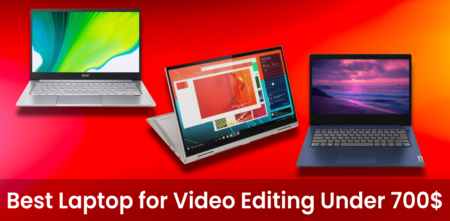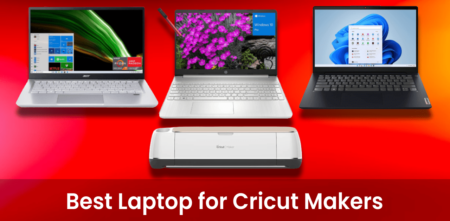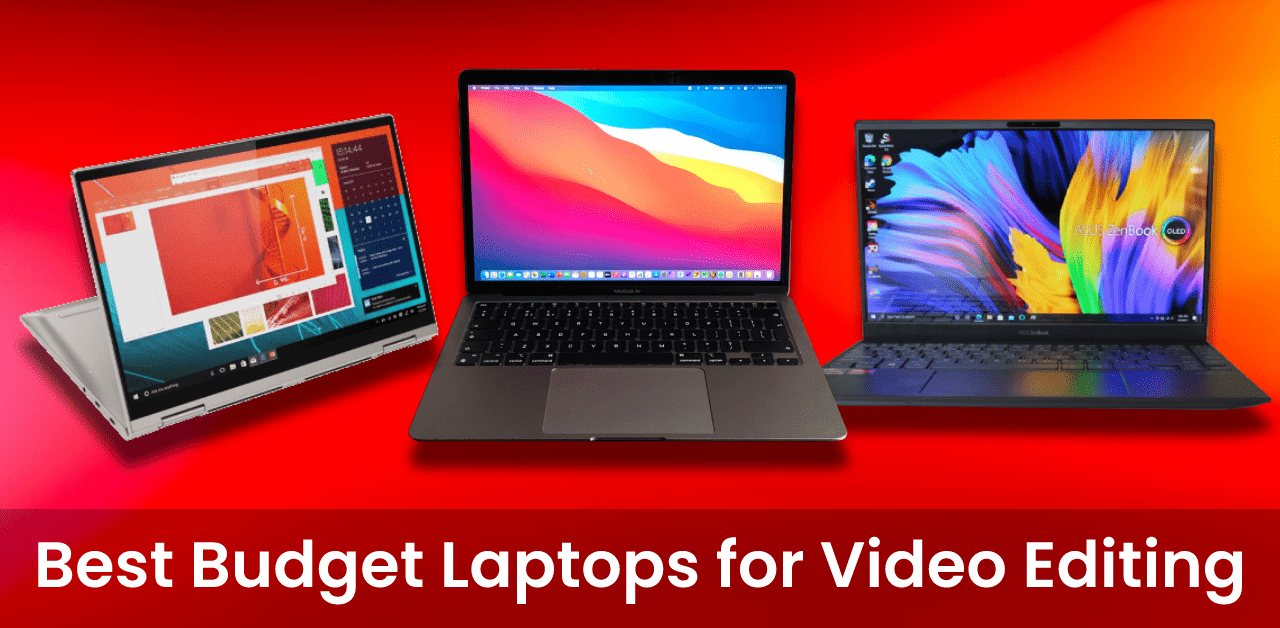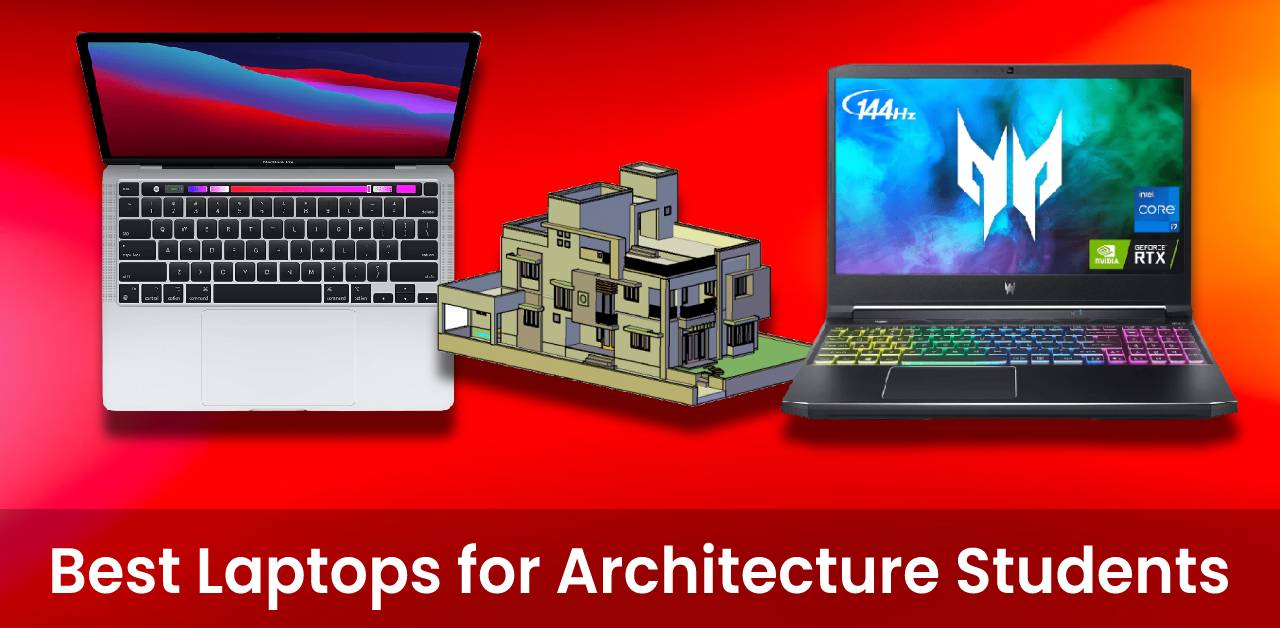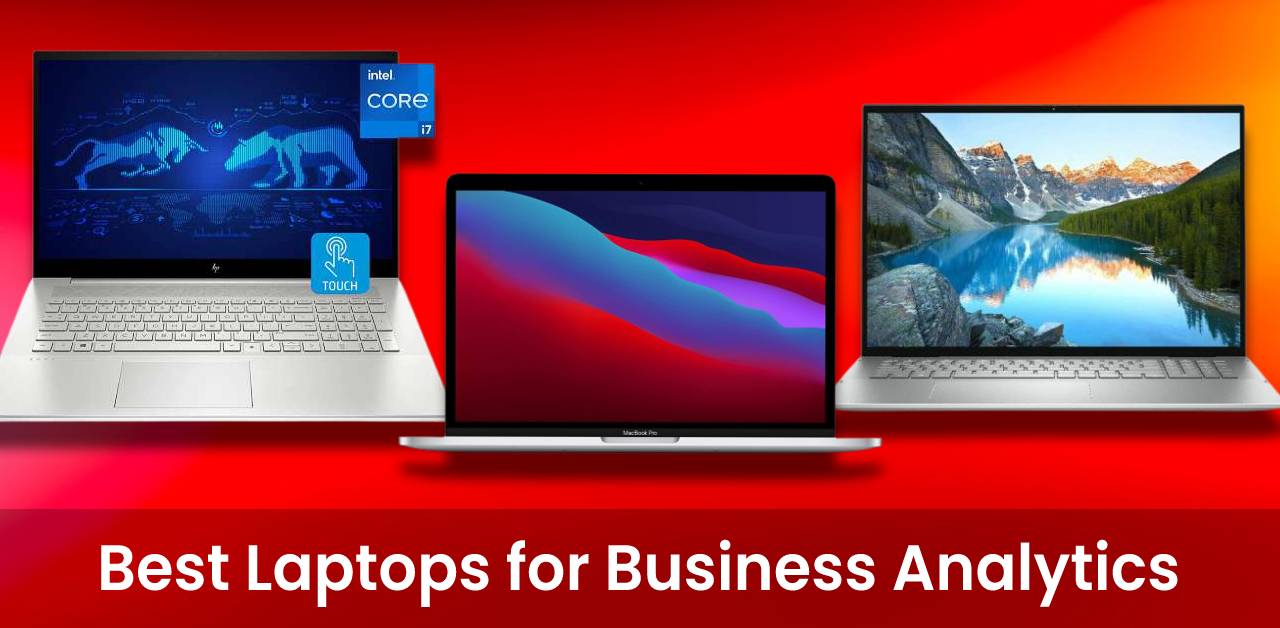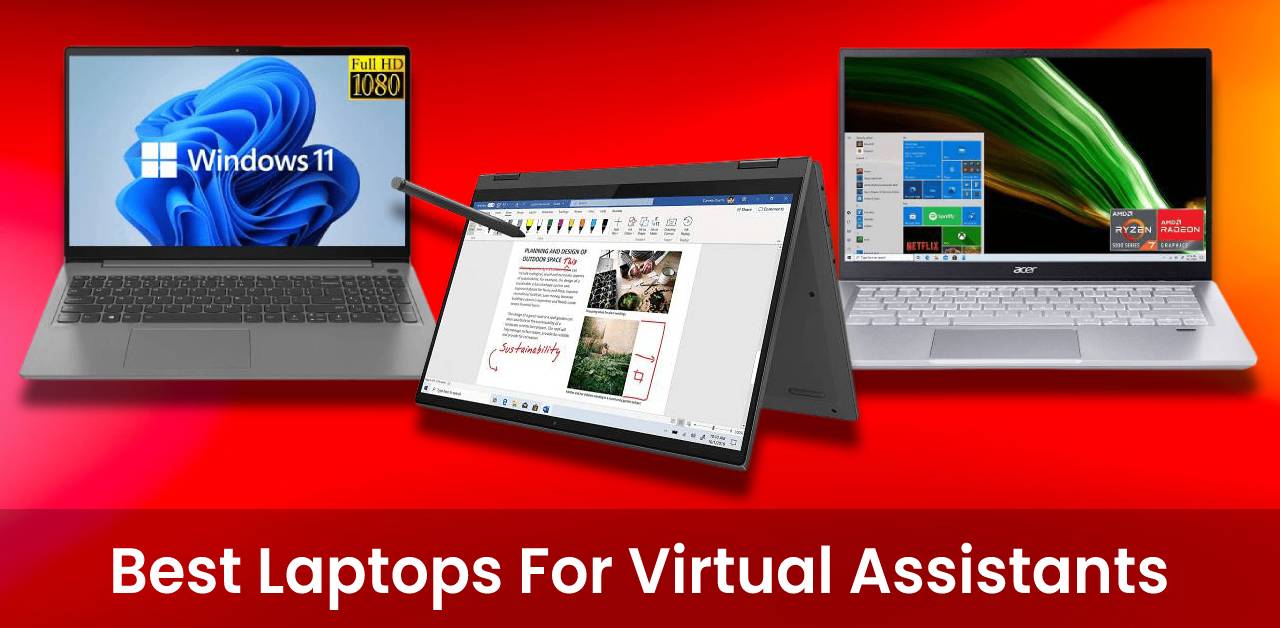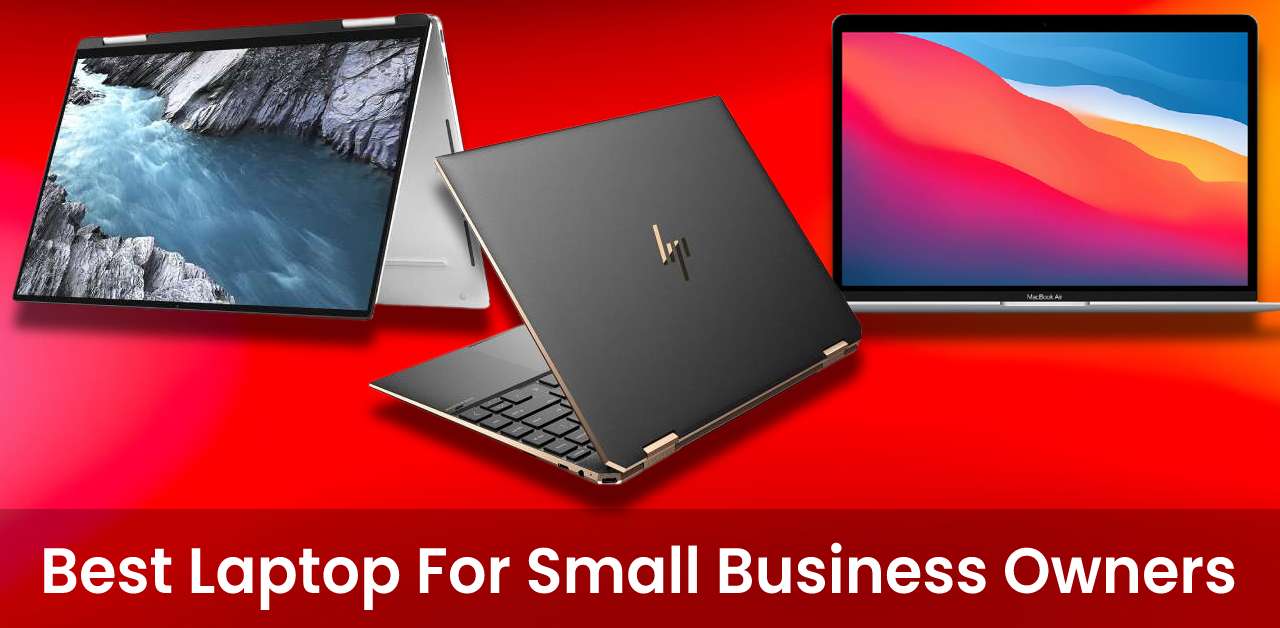Are you looking to find the best laptops for architecture students? Well, we’ve got you covered. The design and drafting of architectural projects today are mostly done on a computer, so you’ll need to get a decent PC or Mac with an appropriately powerful graphics card!
Ready to buy a new laptop for architecture? If so, then you need to read this article. We have compiled all of the best laptops that we think are perfect for architects and efficiently help them get their work done. Best of all, these laptops are available at an affordable price!
Architects need to work on the go, and that’s why they need to have a laptop that can handle everything they throw its way. Whether you’re looking for something lightweight or powerful, we’ve pulled together an extensive list of laptops perfect for architecture! Please look below at our selection of the best laptops for architecture students.
Quick Shopping Tip
When searching for a laptop able to run software like AutoCAD, it is vital to know that if you are looking to purchase a machine that can quickly render 3D models, rather than simple 2D models, then you have to pick a device that has a good dedicated graphics card, like the first three laptops on our list. However, having a good graphics card is unimportant if 3D models are not your priority and you’re happy with a computer that can provide cool 2D designs without any trouble.
Our 9 Picks | Best Laptop for Architecture Students
Apple MacBook Pro
Our Best Pick
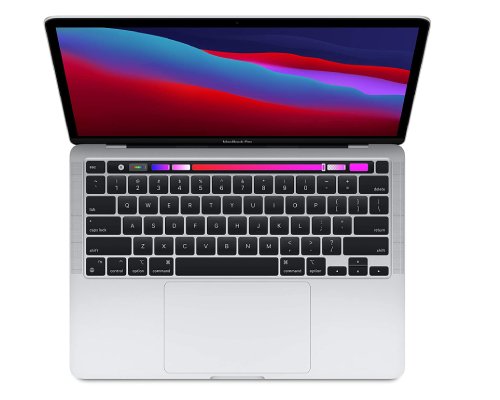
The MacBook Pro models are equipped with an Apple touch bar, a plus over the standard MacBook Air. The touch bar could be handy for your architecture projects and photo and video editing. The MacBook Pro also has faster graphics processing than ever before! These new machines will take your work experience from good to great in an instant without sacrificing power or design appeal—and that’s why they’re one of the best laptops out there on the market.
Apple’s 13-inch MacBook Pro is equipped with a 58.2 watt-hour battery. Apple claims the battery life of the MacBook pro to be up to 20 hours; however, you should expect almost 10-15 hours of use when buying this laptop. Furthermore, battery life is majorly based on how the user uses the computer.
The power adapter can charge over Thunderbolt or MagSafe and come bundled with respective cables for connecting them wirelessly via WiFI Hotspot + mobile transmission options, which allows you to work from anywhere without being connected directly; to your laptop!
The Liquid Retina XDR display on the 13-inch MacBook Pro model provides a stunningly colour accurate and high contrast display that will always offer a crystal clear display when working in Sketchup or AutoCAD.
The MacBook Pro models from Apple include an SDXC card slot, an HDMI port, three USB-C Thunderbolt 4 ports, a 3.5mm headphone jack with support for high impedance headphones, and their MagSafe Cultivation feature, which enables fast charging!
With the 8-core GPU, you can take your modelling to a whole new level. Different programs run much smoother and are more enjoyable on this powerful MacBook.
| Processor | Apple M1 Chip |
| RAM | 8GB RAM |
| Storage | 256GB SSD |
| Graphics | Apple 8-core GPU |
| Display | 13.3-inch IPS (2560 by 1600) Display |
| Operating System | macOS |
| Battery Life | Up to 20 hours (Battery life varies with use) |
| Weight | Approximately 3.0 lbs (1.4KG) |
Acer Predator Triton 300
Our Second Choice
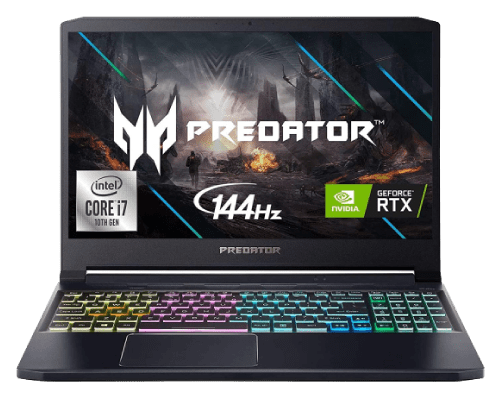
The Predator Helios 300 is a laptop that’s fast and sleek. It features an aluminum body with black-blue color accents, contrasting nicely against its matte finish exterior to make for one aggressive-looking machine!
The 15.6-inch display (1920×1080 pixels) has a matte finish and lacks brightness. The contrast ratio is 975:1 with quick response times at 144Hz, ensuring that the panel produces no flicker even when viewed from close up so sensitive users won’t get headaches or eye problems.
The Core i7-10750H Hexa-core processor operates at a base clock speed of 2.6 GHz and can run up to 5.0GHz. This fast system offers enough computing power for demanding applications with its Hyper-Threading support – perfect for getting those tasks done quickly!
Furthermore, the powerful RTX 2070 GPU will handle all your graphical needs such as rendering like a boss, making this laptop an excellent choice for 3D modelling in AutoCAD and other related software.
The keyboard feels very good when typing. The arrow and the WASD keys have thicker borders, making them easier to find in dimmer light! Enhancing the aesthetics of this laptop is its four-zone keyboard backlight, making it look super cool. In addition, the backlight can also be customized by the Acer’s PredatorSense app.
The Predator Helios 300 has a good selection of ports. There are two USB 3.2 Gen 1 Type-A ports (5Gbps), an audio combo jack, and an Ethernet connection on the left edge. At the same time, the right side features one more classic styled 5gbps coastal compliant data transfer device, which can also output video through HDMI or Mini DisplayPort connectors, respectively, if needed. Furthermore, the Acer Predator Helios 300 models have two RAM slots that can be upgraded if you’re not already maxed out.
| Processor | 10th Generation Intel i7-10750H Processor |
| RAM | 16GB RAM |
| Storage | 1TB SSD |
| Graphics | NVIDIA GeForce RTX 2070 |
| Display | 15.6″ Full HD (1920 x 1080) IPS LED-backlit 144Hz display |
| Operating System | Windows 10 |
| Battery Life | 3-7 hours (Battery life varies with use) |
| Weight | Approximately 4.41 lbs (2.0KG) |
Lenovo IdeaPad Gaming 3
Our Budget Pick
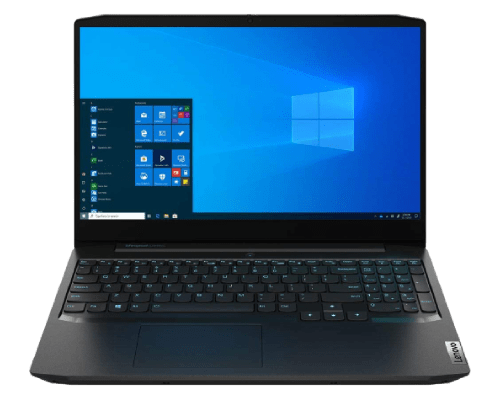
The IdeaPad Gaming 3 is an excellent choice for buying a budget laptop with a dedicated GPU. The NVIDIA GeForce GTX 1650 is a pretty popular graphics card for budget gaming laptops having good features at a mid-range price and good features. However, it does support raytracing.
The Lenovo IdeaPad Gaming 3 is a budget laptop with the AMD Ryzen 5 5600H processor that can quickly handle your processes. In addition, the computer has 8GB of RAM and a 512GB SSD. As a designer, if you think that 8GB of RAM will not suffice and desire more RAM, you should know that you can easily upgrade the RAM on this laptop, greatly enhancing your laptop’s multitasking capability.
With a weight of 2.2 kg and measurements of 24mm at the waist, this 15-inch laptop is perfect for those who travel frequently or do not want to carry heavy electronics around with them everywhere they go!
The keyboard features a NumberPad section and backlit options – you only have a single zone blue keyboard backlight. The chassis can easily catch fingerprints but can be cleaned with a microfiber towel, so it’s not much of an issue.
On the left side of your new ThinkPad, you’ll find a power plug and RJ 45 connector. In addition to these two essentials for connecting with wired devices like printers or laptops running on battery life alone, there’s also an HDMI input as well as a USB Type-C port.
The 16:9 screen with a pixel density of – 142 PPI and pitch 0.18 х0.18 mm make it look crystal-clear HD when viewed from 60 cm or more; Its diagonal length is 15.6″ (39.62 cm), and the resolution of this monitor is 1920 х 1080 pixels which means that you get a lot more screen space for your money.
| Processor | AMD Ryzen 5 5600H Processor |
| RAM | 8GB RAM |
| Storage | 256GB SSD |
| Graphics | NVIDIA GeForce GTX 1650 |
| Display | 15.6″ FHD (1920 x 1080) 120Hz Display |
| Operating System | Windows 10 |
| Battery Life | Up to 7 hours (Battery life varies with use) |
| Weight | Approximately 4.8 lbs (2.2KG) |
Acer Aspire 5
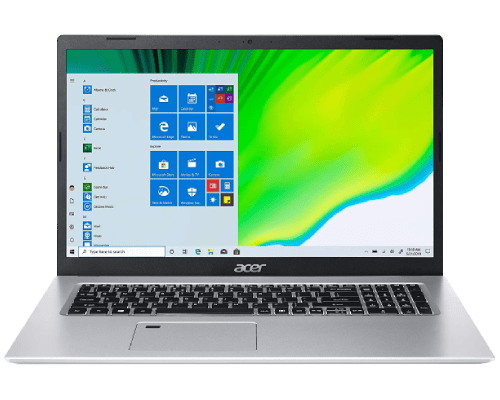
The Acer Aspire 5 is an excellent laptop for architectural students. Not only does it have a fantastic feature set, but also strong performance and brilliant battery life at a low price!
The Acer Aspire 5 is a powerful machine with its 11th Gen Intel Core i7-1165G7 and fast 512GB SSD. In addition, 16GB of RAM. All these juicy specifications under the $1000 mark – what more could someone want?
Aspire 5 is a sleek laptop with a fantastic display. The 17-inch panel has 1920 x 1080 resolution and decent brightness, making it perfect for day or nighttime use!
The Acer Aspire 5 is an elegantly designed laptop and weighs approximately 5.73 pounds, which is a bit too much compared to the 15.6″ version of this laptop, which weighs only around 3.64 pounds.
The increased weight is probably due to the large 17.3″ display, which negatively affects the portability of this laptop.
The sides of this machine are fully-tented with ports, including HDMI for video consumption on the go. As for the ports, you’ll have a variety in this laptop, so you needn’t worry.
The Intel Core i7-1165G7 is a quad-core laptop chip that Acer has paired with its 48W lithium-ion battery. The fast processor runs at 4 GHz and offers 12+ hours of usage on one charge. You can get undoubtful super performance in AutoCAD 3D and other architecture software with the features mentioned above.
| Processor | 11th Generation Intel Core i7-1165G7 |
| RAM | 16GB RAM |
| Storage | 512GB SSD |
| Graphics | Intel Iris Xe Graphics |
| Display | 17.3″ Full HD (1920 x 1080) IPS Display |
| Operating System | Windows 10 |
| Battery Life | Up to 8 hours (Battery life varies with use) |
| Weight | Approximately 5.73 lbs (2.6KG) |
Acer Nitro 5
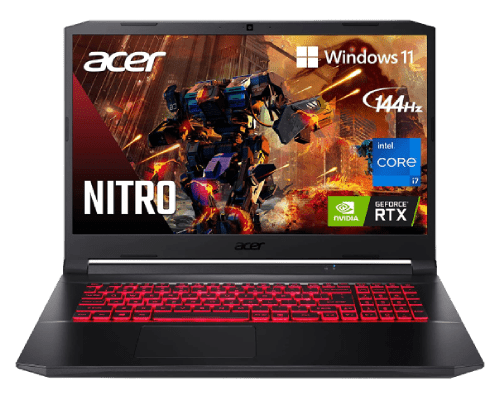
Acer has released the Nitro 5 laptop with the best-selling GPU on Amazon, and this time around, Acer decided to go for a more specialized model. The RTX 3050Ti is considered mid-range, but it’s much better suited to CAD software than gaming; perfect if you need intense 3D rendering power in your workstation!
There are no limits to designing with the Intel Core i7-11800H processor. This Octa-core, sixteen-thread beast can handle any task you throw its way and does so effortlessly, thanks in part to a clock speed of up to 4.6GHz.
The plastic around this notebook’s keyboard doesn’t bend easily. It has creases that run beneath it for good measure – its weight (2.2kg) is noteworthy when compared against other devices of similar dimensions or features. Its profile measures 24mm thin, which is much attractive.
Acer Nitro 5 features a more open design, with charging ports on the back and easy cable management. There are two USB Type-A 3.2 Gen 1 ports on the left alongside an Ethernet (RJ-45) connector that can be used for a Wi-Fi connection as well as an audio-out jack. At the same time, there is also an HDMI port available on the right, in addition to a USB 3.2 Gen 2 port (power-off charging) and a USB 3.2 Type-C Gen 2 display port.
You’ll find 16GB of DDR4 RAM, as well as 1TB NVMe SSD and 2x M2 slots for storage devices such as SSDs or HDDs; all within easy reach on this motherboard thanks to its six SATA 6Gb/s ports and two PCIe 3.0 x16 slots, plus one more running at PCIe 4 lane speed, so you are not left when playing with 3D models!
The Nitro 5 comes with a 144Hz display. Although the display may not be your biggest priority when using this laptop for designing, it is a cherry on top within this budget!
| Processor | 11th Generation Intel Core i7-11800H |
| RAM | 16GB RAM |
| Storage | 1TB SSD |
| Graphics | NVIDIA GeForce RTX 3050 Ti (4GB dedicated GDDR6 VRAM) |
| Display | 17.3″ Full HD 144Hz (1920 x 1080) Display |
| Operating System | Windows 10 |
| Battery Life | Up to 8 hours (Battery life varies with use) |
| Weight | Approximately 4.85 lbs (2.2 KG) |
MSI GL66 Pulse
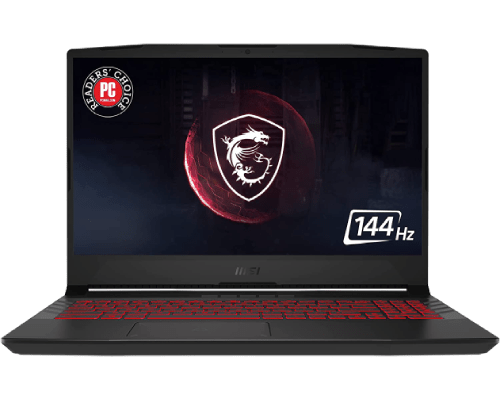
With its high-range laptop that architecture students can easily use for designing in 2022, MSI offers Intel “Tiger Lake-H” processing and NVIDIA GeForce RTX 3070 series graphics which would be enough to render all your 3D models with ease. The GL66 Pulse is equipped with more powerful hardware than ever before to keep up with today’s youth’s fast-paced life by using cutting-edge technology that was unheard of only a couple of years ago.
The laser-etched shield logo and angled corners make this notebook stand out from its competition in a good way – drawing attention without being flashy or garish like some other brands might do just for added flair.
GL66 Pulse comes with three USB Type-A ports, one port for connecting headphones and another that can output 4K video at 60Hz. The power supply also connects at the left-back of your device, so you don’t need an outlet nearby when charging. A 180-watt adapter provides enough energy required by this laptop!
The high refresh rate screen of GL66 is an ideal pairing with its 8GB GeForce RTX 3070, a dedicated GPU that produces close to or just above triple-digit frame rates at native 1,920 x 1080 resolution.
The GL66 is a good combination of performance, portability, and power. Equipped with Intel’s eight-core i7 processor to take on any task at hand, 16GBs of memory for peak productivity or media streaming needs (depending on what you’re doing), a 512GB solid-state drive holding Windows 10 Home operating system which will make your machine boot up before you know it.
The MSI GL66 Pulse is a step up from the ultra-budget GF Katana line. It has an exclusive metal lid, RGB keyboard backlighting that you can control through their software app (MSI Center), and other unique features like Steel Series Engine 3 Software Suite.
In short, the MSI GL66 could be a great laptop to handle all your different requirements while running architecture software such as AutoCAD to develop 2D and 3D models that steal the show and make your design stand out from others.
| Processor | 11th Generation Intel Core i7-11800H |
| RAM | 16GB RAM |
| Storage | 512GB SSD |
| Graphics | NVIDIA GeForce RTX 3070 |
| Display | 15.6″ 144Hz Full HD 1080p Display |
| Operating System | Windows 10 |
| Battery Life | 3-4 hours (Battery life varies with use) |
| Weight | Approximately 4.63 lbs (2.1KG) |
ASUS ZenBook Flip 13
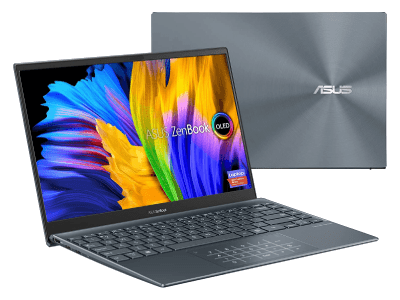
This 13-inch laptop has an excellent OLED display that’ll effortlessly flip and transform into a tablet. The stability of the aluminum used in this device makes it almost impossible to twist.
The connectivity of this device includes two Thunderbolt 4 ports and one USB Type-C slot for charging purposes only (the other USB type-A port). There’s also an HDMI output which could take up more power than necessary if used constantly. Furthermore, there’s also a USB Type-A slot.
The ZenBook Flip 13’s chiclet keyboard is equipped with a backlight adjusted at different brightness levels. The keys themselves are pretty smooth and soft. In addition, they also provide enough grip when typing.
The built-in display is an OLED panel in the 16:9 format with a resolution of 1920×1080 pixels, resulting in Full HD. With such high pixel density (166 PPI), it will be perfect for watching videos or using all sorts of software used for architecture designing.
With the Intel Core i7-1165G7, Asus has created a laptop that can easily switch between tablet and Ultrabook form factors. The 16GB RAM and 1TB SSD provide enough power for most users’ needs.
Since the Asus Zenbook is so lightweight and of very compact size, portability is not an issue. If your work keeps you on the road, this laptop could become a good travel companion for you. You’ll enjoy designing those cool-looking models on this sleek baby.
| Processor | Intel Evo Core i7-1165G7 Processor |
| RAM | 16GB RAM |
| Storage | 1TB SSD |
| Graphics | Intel Iris Xe Graphics |
| Display | 13.3” OLED FHD Touch Screen |
| Operating System | Windows 10 |
| Battery Life | 10-12 hours (Battery life varies with use) |
| Weight | Approximately 2.62 lbs (1.2KG) |
Lenovo Ideapad Flex 5
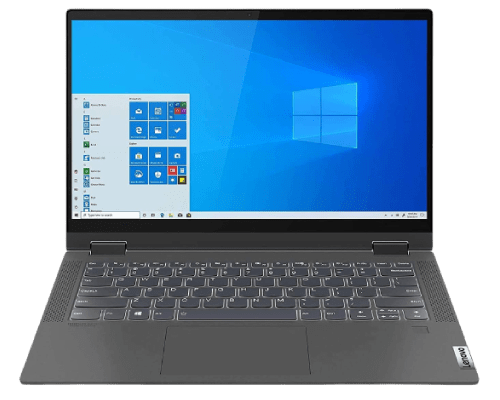
The Lenovo IdeaPad Flex 5 14 is a 2-in-1 touchscreen convertible laptop with the perfect portability and power blend to get you through your workday. This lightweight device features an aluminum body, which gives it its sleek look while also keeping things light enough for AutoCAD purposes.
USB Type-C is the new standard for connecting devices to a computer. The USB-C port on this laptop can charge your phone. In addition, you will also have a 3.5mm headphone jack, an HDMI, and an AC power jack. Furthermore, it also has two USB 3.1 Gen 1 ports and an SD card reader.
Some people might find the touchpad a bit stiff, but you won’t face any issues when it comes to tracking. The backlit keyboard is also great, with good stable keys that enhance the typing experience and make it comfortable.
The Ryzen 7 5700U is Lenovo’s wild card for the Lenovo Ideapad Flex. It has the power to take on any task you throw at it. The powerful processor with its 8-cores will make processes like 3D modelling a breeze. The octa-core Ryzen 7 5700U is a devastatingly fast processor that even outpaces some of the fastest laptops on this list. The 512GB SSD and the 16GB of RAM will provide efficient multitasking and fast bootup time.
The 512GB PCIe SSD is advertised with a maximum read speed of 2400 MB/s, but it only has one M.2 2280 slot for storage cards – that means you can fit more than just the essentials on this drive!
Let’s not forget to shed some light on the battery life of this device. The Lenovo Ideapad Flex 5 will successfully deliver an all-day battery life. You may manage to get more than 16 hours of use from a single charge as well.
| Processor | AMD Ryzen 7 4700U Processor |
| RAM | 16GB RAM |
| Storage | 512GB SSD |
| Graphics | AMD Radeon Graphics |
| Display | 14″ Full HD IPS Touch Screen |
| Operating System | Windows 10 |
| Battery Life | Up to 16 hours (Battery life varies with use) |
| Weight | Approximately 3.6 lbs (1.65KG) |
HP Pavilion 15
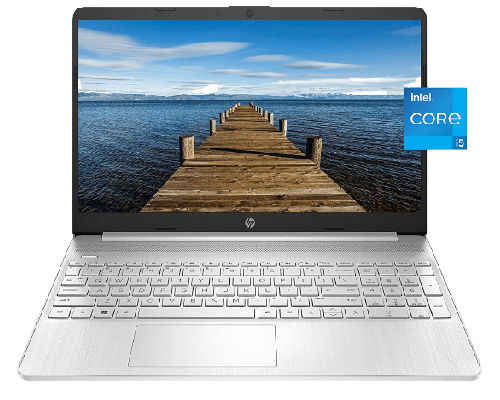
The HP 15 laptop appears to be a spotless device. It has an overall decent build quality and is made from mixed polycarbonate/aluminum material, maintaining its affordability!
This particular model of the HP 15 is hooked up with an 11th Generation Intel Core i5 processor and 8GB of RAM (which can also be upgraded). This combination is pretty good for fast performance, especially considering that this laptop is available for under 600$. This laptop comes with 256GB SSD by default, but you can upgrade the storage drives if you are unsatisfied.
The 15-inch notebook is light and sleek, weighing just 3.75 pounds (1.75 kg). The system has plenty of ports to connect your devices. There is HDMI 2.0, which can support external monitors up to 4K at 60 FPS. Composite Video Outputs for older televisions and other video equipment are also included.
One of the most significant drawbacks of this laptop is that it does not come with a backlit keyboard, which is disappointing. It is an essential and fundamental feature that must be included in all laptops. The text on the keys may also be challenging to read for some people; it would have been better if the text was bold. That would make it much easier to read it.
The trackpad is decent, and it has a moderate to high rate of clicking when gliding at medium speeds or faster; slower clicks result in sticking for precision.
The display of this laptop has a high contrast ratio and sharp images because it’s been helped by the glossy overlay. The response times are also decent for reduced ghosting when editing models, making them suitable if you want to use AutoCAD on your computer!
This could be a great laptop to fulfil your architectural needs if you are on a budget. If you can spend more money and upgrade the RAM and SSD, it would be even better.
| Processor | 11th Generation Intel Core i5-1135G7 Processor |
| RAM | 8GB RAM |
| Storage | 256GB SSD |
| Graphics | Intel Iris Xe Graphics |
| Display | 15.6-inch Full HD IPS Display |
| Operating System | Windows 11 |
| Battery Life | 4-7 hours (Battery life varies with use) |
| Weight | Approximately 3.75 lbs (1.7KG) |
Buying Guide
It is recommended to keep the following ten factors in mind when planning to purchase a new laptop.
The type of laptop
There are many different types of laptops on the market, so it’s vital to decide which one is right for you. Laptops can be classified by the operating system (OS), form factor, and use.
Operating system:
Windows, macOS (formerly Mac OS X), and Linux are the most common operating systems. Windows is the most popular operating system and is used on most laptops. However, there are also many macOS and Linux users, so if you want something different from Windows, you will find a wide range of Linux and macOS laptops on the market.
Form factor:
Laptops have different form factors, which means they have different body designs. There are three main laptop form factors: clamshells, detachable, and 2-in-1s.
Clamshells contain all of their components in a single body, so they typically lack features that some other form factors have, such as touchscreens or 360-degree hinges. Windows 10 is designed to work best with clamshells because it is optimized for this type of design. MacBooks are also clamshell laptops since they don’t have touch screens or 360-degree hinges.
Detachable laptops are composed of two parts: a tablet and a base. The tablet is the central part of the laptop which you can use on its own. The laptop’s base contains the keyboard, trackpad, and other components to function as a traditional clamshell laptop. Detachable laptops typically come with touchscreens and 360-degree hinges. Still, they don’t have built-in keyboards as clamshells do—the bases generally are more expensive models which you purchase separately from your touchscreen/tablet part.
2-in-1s are similar to detachable laptops because they also have two parts a tablet and a base. However, unlike detachable laptops, 2-in-1s’ bases aren’t separate from their tablets. The tablet and base are usually attached magnetically in different modes (e.g., laptop, stand, tent, and tablet mode). 2-in-1s typically come with 360-degree hinges, touchscreens, and built-in keyboards.
Use:
Laptops can also be classified by their use. The most common uses are work, education, and media consumption (watching documentaries etc.). If you know what you’ll be using your laptop for the most. For example, if you will be using your computer for work and school, you might want to consider getting a laptop with good battery life so you can work on it for hours without worrying about it running out of power.
Processor
The processor is the most critical component of a laptop. It’s responsible for performing all the computer’s tasks and determines the laptop’s speed. When looking for a new laptop, you should find a powerful processor to handle your tasks. If you use your laptop for rendering or video editing, you will need a more powerful processor than if you will only use it for basic tasks like web browsing and word processing.
RAM
RAM (random access memory) is the second most important laptop component. It determines how many tasks a laptop can handle at once and how quickly they will be completed. Most laptops come with 8 GB of RAM, but you can find some with 16 GB or even 32 GB. If you know that you will be using your laptop for more intensive tasks, you should get one with more RAM.
Graphics card
A graphics card is a key factor to consider when purchasing a laptop. A graphics card performs all graphical functions for your computer, including rendering 3D images and video as well as rendering 2D images. A laptop with a GPU can create sharper and more vibrant visuals than those without a GPU.
Storage
Storage is an important factor when selecting a laptop. The amount of storage you need depends on the type of files you plan to store on your laptop. If you plan to store many photos and videos, you will need a laptop with a lot of storage. If you plan to store only a few files, you may be able to get away with a laptop with less storage.
Another thing to consider when selecting a laptop is to think about the speed at which you would like your files to be transferred from the storage device. Though most laptops now have a hard drive, some have a solid-state drive to store data faster than a regular hard drive. Some laptops even allow the use of both to choose the speed you want. However, having an SSD in your computer is a must for super-speed in today’s era.
Battery life
Battery life is essential to consider when buying a new laptop. Laptops with long battery lives are ideal for people who need to work on them for hours without having to worry about their battery running out. You should test the battery life of any laptops you’re considering buying by using them until they die, which will give you a good idea of how long the battery will last with regular use.
Operating system
Windows 10 is the most popular operating system for laptops. It’s versatile and can be used for a variety of tasks. If you’re looking for a new laptop, you should find one with Windows 10 pre-installed. However, Windows 11 is also available in the upcoming laptops, so you can also resort to that if you wish.
Display
The display is an essential factor to consider when buying a new laptop. Laptops with high-resolution displays are great for people who need to do a lot of photo or video editing. Laptops with touchscreens are ideal for people who want to interact with their devices directly. If you’re not sure what type of display you need, it’s best to look for one that has a 1080p display.
Portability
Portability is an important factor to consider if you travel with your laptop often. Laptops are typically categorized as portable or heavy, indicating how heavy they are and how easy they are to carry around. Generally, the lighter the laptop is, the more expensive it will be. If you’re looking for something extremely portable but don’t want to spend too much money on it, then try finding a thin 13-inch laptop that weighs less than 3 lbs.
Price
Price is one of the most significant factors people consider when buying a new laptop due to its importance in determining what type of device someone can afford. The price of laptops can vary greatly, so it’s essential to find one that fits your budget. It would help if you also consider the other factors mentioned in this article when determining how much you’re willing to spend on a new laptop.
These are just some of the most important factors to consider when buying a new laptop. Make sure to do your research and ask around to see what other people recommend before purchasing. With so many different laptops on the market, it can be challenging to decide which one is right for you. By taking the time to consider all of these factors, you’ll be able to find the perfect laptop for your needs.
Make sure to keep these ten factors in mind. They will help you find the best device for your needs and budget. Laptops vary greatly in price, portability, performance, and display quality, so it’s crucial to find one that meets your specific needs. If you’re not sure where to start, consult this guide to help you make the right decision.
Conclusion
There are many different types of laptops that can be used by architecture students when it comes to laptop technology. The 8 best laptops for architecture students we’ve provided in this article will help you determine what type of computer is the right fit for your needs and budget without sacrificing performance or functionality.
For more laptop buying guides and information Visit here.
Frequently Asked Questions
Which type of storage drive do I need for architecture?
Make sure to get a solid-state drive (SSD) for the fast storage of data and an external hard drive if you don’t already have one. A computer with too little memory will run slowly no matter what type it is because there’s nothing left in your system that can be used by programs other than those running on RAM.
What’s better for an architecture student, a laptop or a computer?
A laptop is often the best choice for architects because they are portable and can be taken anywhere. It also has some other benefits, such as long battery life that make them ideal in this profession where you need to work onsite without an outlet nearby or access at all times of day/night.
A desktop may seem like a logical alternative due to its durability under heavy usage; however, when considering these points alongside portability – not having any wires will definitely save time while simultaneously being able enough power up your device if it’s ever lost!
More Laptop Buying Guides
Thank you for Reading!

